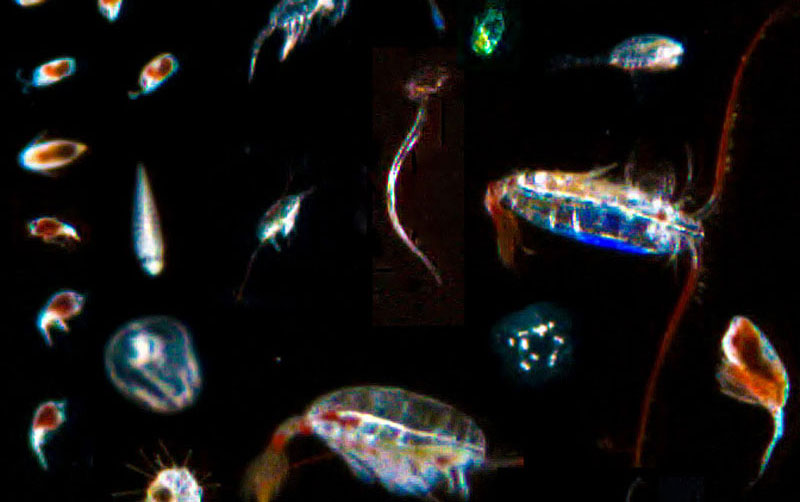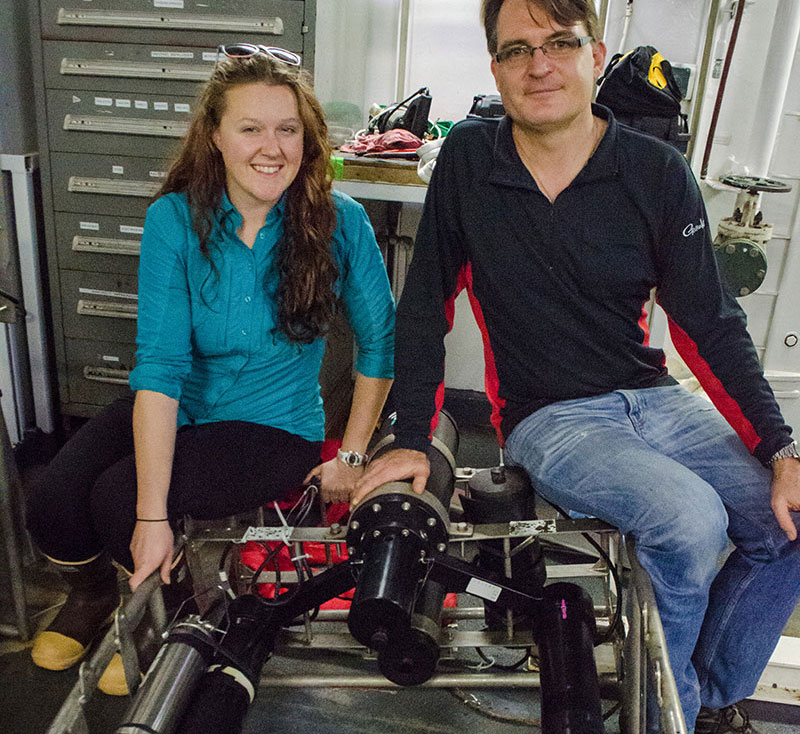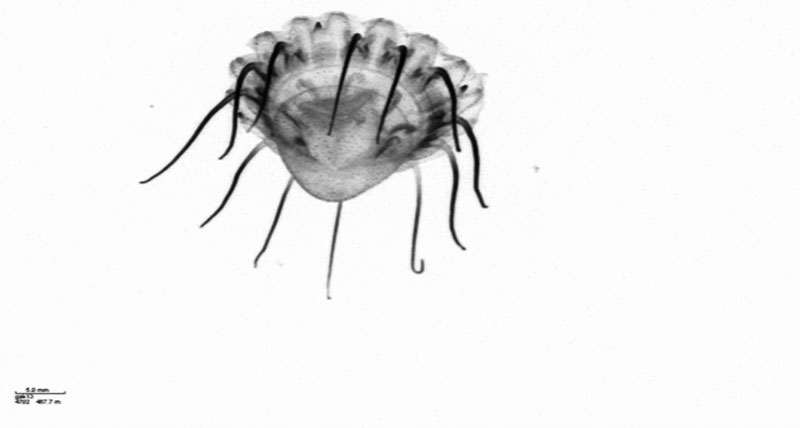
By Dhugal Lindsay, Senior Staff Scientist, JAMSTEC
Jessica Pretty, Graduate Student, University of Alaska Fairbanks
August 6, 2016

This mosaic of images from the VPR shows a variety of organisms imaged by the instrument, all to scale, during this expedition. Image courtesy of Dhugal Lindsay, JAMSTEC, The Hidden Ocean 2016: Chukchi Borderlands. Download larger version (160 KB).
Image-based profiling instruments take photographs of parcels of water as they are lowered through the water column. These images contain lots of different things such as zooplankton, phytoplankton, and non-living particles; things that all play a role in the ocean’s carbon cycle and therefore are integral to understanding the Earth’s carbon cycle and allow a glimpse into the vertical profiles of particles in the ocean.
When particles, particularly large particles, make it into deeper (>100 meters) water, the carbon that is stored in them is stored in the ocean for anywhere from a couple years to a couple thousand years. The Underwater Vision Profiler (UVP5) measures the number of particles that are 100 µm (about the width of a human hair) to a few centimeters in diameter, while the Visual Plankton Recorder (VPR) provides images of particles, including organisms, greater than 148 µm in minimum dimension and smaller than four centimeters in maximum dimension at a rate of 12-15 photos per second.
Both the UVP5 and VPR have been deployed in many locations across the globe, but have had fewer opportunities to be deployed in the Arctic Ocean until recently. This expedition, in particular, offered the opportunity to use the UVP5 in conjunction with the VPR, a chance not often stumbled upon.
The UVP and VPR were deployed together on the CTD rosette at nine stations. Whereas the UVP captures images in greyscale, the VPR captures darkfield colour images of plankton. The UVP was configured to image particles in the vertical plane, while the VPR imaged in the horizontal plane.
Comparisons between these instruments should offer insights into both the strengths and limitations of the instruments while collecting quantitative data on the vertical distributions and sizes of plankton and particulates in the Arctic Ocean.

Jessica Pretty and Dr. Dhugal Lindsay sit with the VPR, which is a large and heavy instrument that gets attached to the CTD rosette. Image courtesy of Jessica Pretty, UAF, The Hidden Ocean 2016: Chukchi Borderlands. Download larger version (jpg, 7.8 MB).

While not taken during this expedition, this image of a jellyfish taken by the UVP shows the level of detail that the instrument can capture, such as the inner structure of this jellyfish. Image courtesy of Jessica Pretty, UAF, The Hidden Ocean 2016: Chukchi Borderlands. Download larger version (jpg, 44 KB).